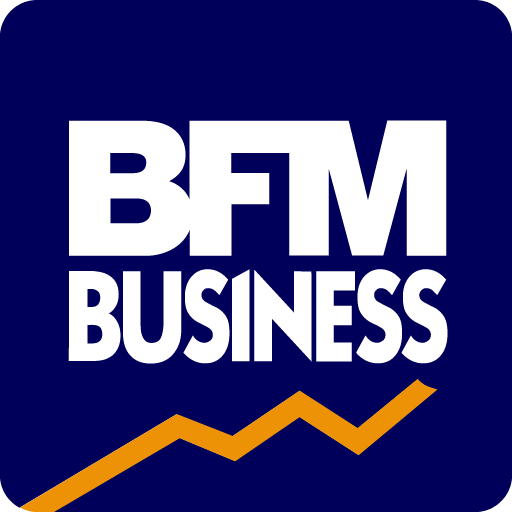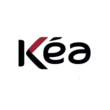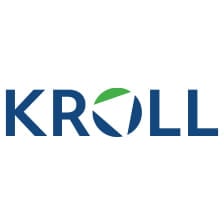Detailed content of our market study
 Inforamtion
Inforamtion
- Number of pages : 35 pages
- Format : Digital and PDF versions
- Last update :
 Summary and extracts
Summary and extracts
1 Market Overview
1.1 Definition and presentation
Freight transport is the economic activity involved in moving goods from one place to another, through different modes of operation such as road, rail, sea and air, or a combination of these (intermodal). This sector is an essential component of modern economies, enabling the development of manufacturing activities, domestic and international trade, and e-commerce, which is constantly growing. Its importance is highlighted by the need for adequate infrastructure and the ability to adapt to market demands and global changes.
The freight market in Italy, with an estimated value of $113.2 billion in 2024, is a key pillar of the national economy. This value is expected to grow to $140.9 billion by 2030, with a compound annual growth rate (CAGR) of 3.71 percent. The sector supports key activities such as manufacturing, wholesale and retail trade, and the increasingly relevant e-commerce segment. The latter, in particular, recorded 9.6 percent year-on-year growth in 2023, reaching a global value of $3.29 trillion, a trend that continues to drive demand for logistics services, especially for rapid and widespread deliveries.
Road transport (code 49.41.00) is the most popular mode, due to its flexibility and capillarity. Ideal for short and medium distances, it guarantees door-to-door deliveries and dominates the last-mile segment, which is essential for retail and e-commerce. it is suitable for both full (FTL) and part loads (LTL), offering customized solutions for different quantities of goods. In Europe, the road transport market is estimated at $496.83 billion in 2024 and is expected to reach $601.59 billion by 2030, with a CAGR of 3.24 percent.
Rail transport (code 49.20.00) stands out for its environmental sustainability and ability to move heavy loads over long distances. This mode is considered a strategic alternative to road transport, helping to reduce CO₂ emissions and decongest road infrastructure.
Maritime transport (code 50.20.00) is critical for international trade, moving large volumes of goods, such as containers and bulk, at relatively low cost over long distances. Initiatives such as the freeways of the sea aim to improve logistics efficiency by reducing land traffic. In the global context, the shipping market is a mainstay for intercontinental trade.
Air transport (code 51.21.00) mainly caters to urgent or high value-added goods. While it is the most expensive mode, it provides unparalleled speed and high security, making it strategic for sectors such as pharmaceuticals, technology and e-commerce.
Finally, intermodal transport combines several modes without cargo interruption, leveraging the strengths of each to optimize costs and environmental impact. This mode is becoming increasingly important, in line with sustainability policies and the European Green Deal.
With increasing urbanization, which will see more than two-thirds of the world's population living in urban areas by 2050, the freight sector continues to evolve to meet the needs of an increasingly dynamic and connected global market.
1.2 The global market
The global freight transportation and logistics market is expected to reach a value of $*.** trillion in ****, with an estimated growth to $*.** trillion by ****. This represents a compound annual growth rate (***) of *.** percent during the ****-**** period, up from *.** percent recorded during the ****-**** period.
Global freight and logistics market value World, ****-****, in trillions of dollars (***) Mordor Intelligence
In ****, the domestic transportation segment accounted for **.** percent of the total value share. This growth is supported by increasing urbanization: more than half of the world's population lives in urban areas, and this percentage is expected to rise to about two-thirds by ****. This has spurred the growth of the domestic CEP (***) segment. Wholesale and retail also remains a key sector, accounting for **.** percent of the value share of the end-user market in ****. This is attributable to the increase in retail sales and e-commerce. The global e-commerce market, in particular, grew by *.* percent year-on-year, reaching a value of $*.** trillion in ****.
Global e-commerce market value (***) World, ****-****, in trillion dollars (***) Mordor Intelligence
Finally, the temperature-controlled storage segment shows significant growth, with a projected CAGR of *.** percent over the ****-**** period. Free trade agreements among EU nations have stimulated trade, leading to an increase in cold ...
1.3 The European market
The trucking market in Europe is highly segmented and diversified, covering a wide range of end-user sectors, including agriculture, fishing and forestry, construction, manufacturing, oil and gas, mining and quarrying, and wholesale and retail. This market is also categorized by destination (***) of *.** percent over the forecast period.
European road freight market value Europe, ****-****, in billions of dollars (***) Mordor Intelligence
Market growth is also supported bytechnology integration, such as fleet management systems and the adoption of low-emission vehicles to comply with European climate goals. In particular, the use of electric and hydrogen-powered trucks is gaining popularity, helping to improve operational efficiency and reduce environmental impact.
1.4 The Italian market
The Italian freight and logistics market is estimated to be worth $***.* billion in **** and is expected to reach $***.* billion by ****, with a compound annual growth rate(***) of *.** percent over the forecast period. This sector is a key pillar of the Italian economy, thanks to its ability to support manufacturing, trade, and the growing e-commerce sector.
Value of the Italian transportation and logistics market Italy, ****-****, in billions of dollars (***) Mordor Intelligence
The domestic CEP (***) market in Italy is strongly driven by the expansion ofe-commerce, which has seen significant growth in recent years. The value of e-commerce in Italy has increased from $**.* billion in **** to $**.* billion in ****, driving demand for fast and efficient logistics services.
E-commerce sector (***) Italy, ****-****, in billions of dollars (***) Mordor Intelligence
Among transportation modes, the air segment is projected to be the fastest growing, with a CAGR of *.** percent between **** and ****. A significant example of this expansion is the plans for a new international terminal atFlorence's Amerigo Vespucci Airport, announced in February ****. Designed by U.S.-based Rafael Viñoly Architects, the new terminal will cover **,*** square meters, strengthening the country's logistics capacity and connectivity.
1.5 Foreign trade
In order to analyze foreign freight trends using the UN Comtrade database, it is useful to refer to HS (***) codes, which divide commodities into specific categories. Here are the main commodity categories, with their related HS Commodity Codes, which represent major sectors of international trade and are relevant to the analysis of freight transport and logistics:
HS Code: ** (***): this category includes a wide range of machinery, industrial equipment, electrical machinery, precision instruments and manufacturing components. HS Code: **-** (***): covers the transportation and export of agricultural products, food, beverages and tobacco. it is a sector that affects many economies, with large volumes of shipments of fresh, packaged and processed products. HS Code: **-** (***): includes organic and inorganic chemicals, pharmaceuticals, fertilizers, plastics, resins, and industrial chemicals. This sector is critical to many industries, including health, agriculture, and energy. HS Code: **-** (***): this category includes textiles, ready-made clothing, leather and its derivatives, which are crucial to the fashion and textile industries.
To simplify the analysis and focus on more homogeneous categories, the following two categories can be considered as the main commodity groups:
Machinery and mechanical equipment, electrical equipment (***): this category encompasses a wide range of industrial products, including production machinery, electrical equipment, precision ...
1.6 Impact of the Russian-Ukrainian conflict
The Russian-Ukrainian conflict has had a direct and significant impact on the freight market, affecting several sectors, including road, air, and sea. The repercussions of this conflict are multiple and complex, extending both regionally and globally, altering transport routes, costs and delivery times, and affecting the efficiency of logistics operations.
Impact on road freight transport
Road freight transport between Russia and Ukraine was immediately disrupted as a result of the war. International sanctions imposed on Russia, combined with the conflict situation, made transit of goods between these countries nearly impossible, creating disruptions in supply chains, particularly for sectors that depend on the flow of raw materials and finished goods from these areas. Many logistics operators have suspended their services, due to difficulties in reaching destinations and uncertainty regarding route security. In addition, the slowdown or paralysis of border crossings between Europe and Russia has increased waiting times and transit costs, with particular pressure on border points.
A major issue has been increased customs and security checks, which have caused significant delays for heavy transports. As reported by Teleroute, the customs authority had to handle a greater flow of goods out and in, with priority given to people over goods. This led ...
2 Demand analysis
2.1 The question
Trends in road freight transport in Italy from **** to **** show a general growth, both in domestic and international transport. The data, expressed in tons, show some significant trends:
Domestic transport has shown a steady increase over the period under consideration. In ****, the figure was ***.** tons, while in **** it rose to *,***.** tons, an increase of **.* percent. This increase reflects a growing demand for goods transportation within national borders, a positive aspect for the Italian economy, indicating increased activity in domestic supply chains and continued growth in the distribution of goods by road. The increase could also be attributed to the post-pandemic economic recovery, which has led to increased volumes of goods to be transported locally. International transport has also shown a positive trend, albeit with less pronounced growth rates than domestic transport. In ****, tons transported internationally was **.** tons, while in **** it rose to **.** tons, a growth of **.* percent. This indicates an increase in demand for international transportation, which could be due to more open markets and expanding trade routes. In particular, the increase in international transport in the post-pandemic period may have been boosted by the recovery of global trade activities and the intensification of Italian exports.
Trends in road freight transport Italy ...
2.2 Demand drivers
Globalization has had a significant impact on international trade, leading to steady growth in goods traded between countries. Data on average international transportation costs and percentage changes from the previous year highlight the growth of international trade and global transportation, which continue to be affected by globalization, changes in market dynamics and logistical challenges. Below is an in-depth look at the main transportation sectors by geographic area and cargo type.
Maritime transport
In ****, shipping saw significant cost reductions in many geographic areas, especially in Europe and the Mediterranean. Specifically:
Shipping in Europe saw a **.* percent decrease in costs for export and **.* percent decrease in costs for import, with freight rates at $***.*/TEU for export and $***.*/TEU for import, a decrease that reflects the fluctuation in costs globally. In other areas such as Oceania, costs increased by **.* percent for export, with $*,***.*/TEU for freight, a growth that highlights increased demand for these more distant and less connected destinations. The Rest of Africa saw a * percent increase in average transportation costs, with a significant increase in freight rates to $*,***.*/TEU for exports. This increase is indicative of the growing demand for products to these emerging markets.
Rail Transport
In ****, average costs for rail ...
2.3 New demand trends
The e-commerce boom has radically transformed the logistics industry, requiring companies to adapt to new needs and challenges. The growing demand for quick and convenient deliveries has prompted companies to innovate in transportation modes, with a particular focus on thelast mile-the final stretch of the route that takes the product from the distribution center to the end consumer.
Adoption of Electric Vehicles and Drones: To address environmental challenges and improve efficiency, many companies are investing in zero-emission electric vehicles for urban deliveries. These vehicles reduce the environmental impact and operational costs associated with traditional fuels. In addition, the use of drones for deliveries is emerging as an innovative solution to reduce delivery times, especially in congested urban areas. For example, Amazon has launched its Prime Air drone delivery service in Italy and the United Kingdom, aiming to transform the delivery process and integrate it with existing platforms to facilitate customer adoption. [***] Agile Inventory andWarehouse Management: the expansion of e-commerce requires more agile inventory and warehouse management. Companies need to implement advanced management systems to monitor inventory in real time and optimize warehouse flows, ensuring efficient and timely distribution of products. This approach helps reduce wait times for customers and minimize warehousing ...
3 Market structure
3.1 The market structure
The structure of the freight transport market is divided into different modes of operation, each identified by specific classification codes that reflect the main characteristics of the service offered.
Freight transport by road (***) is a key component of the logistics sector due to its flexibility and ubiquity. It includes all transport activities carried out by trucks, vans, trucks and other road vehicles, which are ideal for short and medium trips and door-to-door distribution. This segment is particularly relevant for last-mile deliveries, which are essential for retail and e-commerce. Maritime and waterborne transport (***) focuses on the movement of goods by ships, both on sea routes and along inland waterways. This mode is critical for international trade and high volume trades, such as containers and bulk, due to its cost-effectiveness over long distances. The freeways of the sea, an initiative to decongest land-based infrastructure, is a significant example of this mode. Air freight (***) is characterized by its speed and efficiency in moving high-value or urgent goods. It includes all transportation activities performed by aircraft, which are particularly suitable for small or high-value shipments. Although it is the most expensive mode, air transportation plays a strategic role for the pharmaceutical, technology, and international e-commerce ...
3.2 The value chain
The value chain of the freight transport and logistics market consists of several operational stages, which vary according to the mode of transport(***). Below is a detailed breakdown:
Air transport
Type of goods: high-value (***); Stages in the value chain: pickup and consolidation, airport handling, air freight, final distribution.
Maritime transport
Type of cargo: bulky (***); Stages in the value chain: pickup and loading, port operations, sea transport, unloading and sorting, final distribution.
Road transport
Type of goods: general (***); Stages in the value chain: pickup and planning, primary transportation (***), returns management.
3.3 Main actors
Road freight transport
Maritime and coastal freight transport
Air cargo transportation
4 Supply analysis
4.1 Supply analysis
The freight transport market in Italy is characterized by a diversification of transport modes, each with specific peculiarities and areas of application.
Road Transport (***)
Rail Transportation (***)
Maritime Transportation (***)
Air Transportation (***)
Intermodal Transportation
[***]
4.2 The prices
The cost of freight transport in Italy varies significantly depending on several factors, including the mode of transport, distance traveled, weight and size of goods, and market conditions.
Road transport: the Ministry of Infrastructure and Transport updated operating costs per kilometer as of January ****, broken down into four vehicle categories. These values take into account inflation and changes in the cost of fuel, providing a benchmark for the rates charged by industry operators.[***] Rail transport: rail freight rates are often lower than road transport, especially for heavier loads and on longer routes. However, transit times can be slower. Rates vary depending on rail companies and the specific circumstances of the transport.[***] Air freight: air freight is usually the fastest, but also the most expensive. Air freight rates per kilometer are generally higher than other modes. The price is calculated by multiplying the rate by the weight of the goods and the volume the shipment occupies.[***] Sea freight: for sea freight, the shipper usually provides an all-inclusive shipping price, which covers sea freight costs and local costs in the shipper's country. Costs may vary depending on the distance, volume, and weight of the goods.[***] Express courier services: for parcel shipments of small ...
4.3 The impact of Artificial Intelligence in the industry
Artificial intelligence(***) is having a significant impact on the freight transport sector, helping to profoundly transform how it operates and improving overall efficiency. One of the main benefits of AI is its ability to analyze large amounts of data to optimize transportation routes, taking into account variables such as traffic, weather conditions and energy consumption. This can reduce operational costs, improve delivery times and limit environmental impact. In addition, the introduction of predictive maintenance, based on the analysis of data from sensors installed on vehicles, makes it possible to predict and prevent mechanical failures, increasing fleet reliability and minimizing downtime.
In warehouses, AI-supported automation is revolutionizing picking, packing and sorting processes, making operations faster and more efficient, with a significant reduction in errors. Visibility and shipment tracking are also benefiting from AI technologies, improving the ability to monitor the location and status of goods throughout the supply chain in real time. This type of monitoring facilitates more proactive management of issues, contributing to greater reliability of the services offered.
Another relevant contribution of AI relates to demand forecasting and inventory management. Through the analysis of historical data and market trends, it is possible to optimize inventory levels, avoiding waste and ensuring ...
5 Regulations
5.1 Rules and regulations
TheEuropean Union (***) and Italy regulate freight transport and logistics through a detailed regulatory framework designed to ensure safety, efficiency and sustainability. Particular attention is paid to specific categories of products, such as spirits, which are subject to additional regulations for fiscal and safety reasons.
European regulations
Regulation (***) No. ****/****: establishes common conditions for carrying out the business of road transport, including licensing and financial fitness requirements; Regulation (***) No. ****/****: regulates access to the international road haulage market, ensuring fair competition. Regulation (***) ****/****: introduces updates to strengthen transparency and sustainability in the road transport sector. Directive **/***/EEC: promotes combined freight transport, encouraging intermodality to reduce environmental impact. Freight Transport Logistics Action Plan: aims to improve the efficiency of freight transport in the EU through technological innovation and digitalization.
Italian regulations
Highway Code (***): includes specific provisions for road transport, with a focus on maximum permitted weight and safety. ADR (***) regulations: also applied in Italy, regulates the transport of dangerous goods by road, including certain types of highly flammable alcohol. Legislative Decree ***/****: regulates access to the road transport market and requirements for companies operating in the sector. Law No. **/**** (***): regulates activities in Italian ports, with direct impacts on maritime transport of goods. Legislative Decree No. ***/**** (***): establishes environmental ...
5.2 Bonuses and Incentives
Ferrobonus and Marebonus incentives are key tools promoted by the Ministry of Infrastructure and Transport (***) to boost intermodal transport in Italy, encouraging the shift of goods from road to rail and sea, with the aim of reducing environmental impact and decongesting the road network.
Ferrobonus
Ferrobonus is an incentive aimed at combined transport operators who use rail for freight transport.
[***]
Marebonus
The Marebonus, recently renamed Sea Modal Shift, is an incentive aimed at trucking companies that use the freeways of the sea.
[***]
6 Positioning of actors
6.1 Segmentation
Road freight transport
Maritime and coastal freight transportation
Air cargo transportation
- BRT
- DHL Global Forwarding
- Compagnia Italiana di Navigazione (CIN) - Tirrenia
- Poste Air Cargo
All our studies are available online in PDF format
Take a look at an example of our research on another market!
 Choosing this study means :
Choosing this study means :
Access to more than 35 hours of work
Our studies are the result of over 35 hours of research and analysis. Using our studies allows you to devote more time and added value to your projects.
Benefit from 6 years' experience and over 1,500 industry reports already produced
Our expertise enables us to produce comprehensive studies in all sectors, including niche and emerging markets.
Our know-how and methodology enable us to produce reports that offer unique value for money.
Access to several thousand articles and paid-for data
Businesscoot has access to all the paid economic press as well as exclusive databases to carry out its market research (over 30,000 articles and private sources).
To enhance our research, our analysts also use web indicators (semrush, trends, etc.) to identify market trends and company strategies. (Consult our paying sources)
Guaranteed support after your purchase
A team dedicated to after-sales service, to guarantee you a high level of satisfaction. +44 238 097 0676
A digital format designed for our users
Not only do you have access to a PDF, but also to a digital version designed for our customers. This version gives you access to sources, data in Excel format and graphics. The content of the study can therefore be easily retrieved and adapted for your specific needs.
 Our offers :
Our offers :
the freight transport market | Italy
- What are the figures on the size and growth of the market?
- What is driving the growth of the market and its evolution?
- What is the positioning of companies in the value chain?
- Data from several dozen databases
5 reports pack (-15%) IT Italy
- 5 reports at €75.6 excluding VAT per study to choose from our Italian catalogue for 12 months
- Save 15% on additional studies purchased
- Choose to be refunded any unused credit at the end of the 12-month period (duration of the pack)
See the terms and conditions of the pack and the refund of unused credit.















